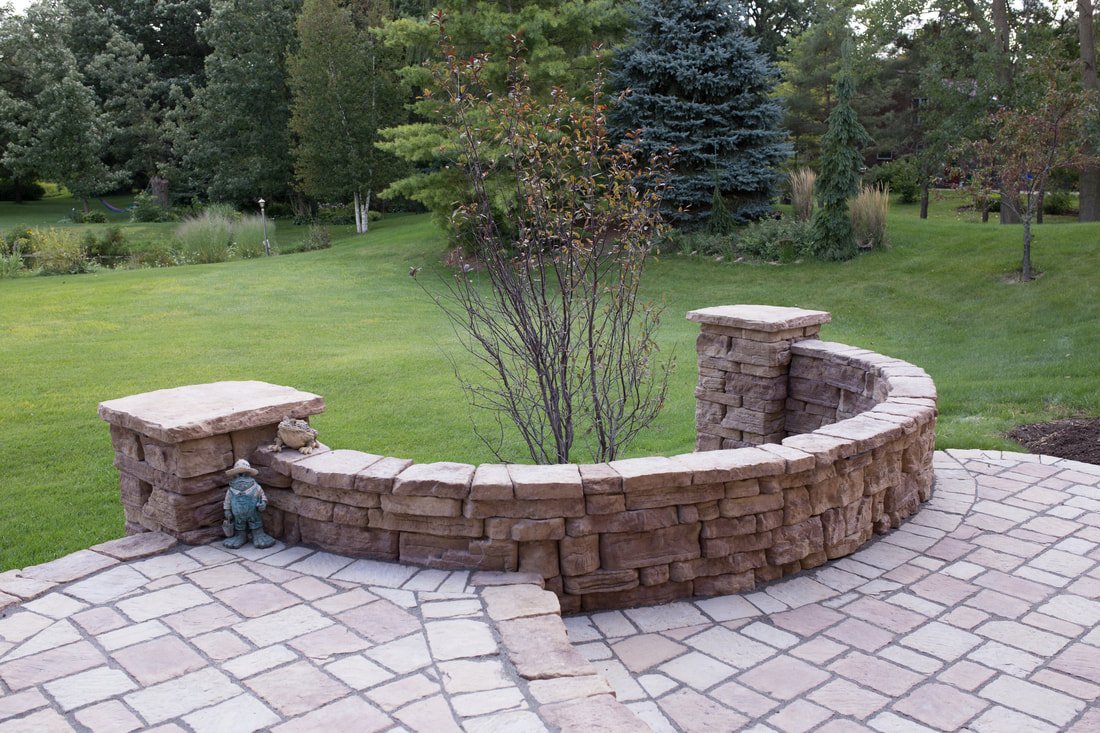4 Tips for Creating Beautiful and Functional Retaining Walls in St. Charles, IL
Retaining walls have been relied upon for centuries to tame sloped landscapes and make them more livable. Unfortunately, there are various opposing forces that act on a retaining wall and, as a result, these structures, when not installed properly, are prone to failure and settlement. Experts recommend hiring a professional contractor to handle the construction of your retaining walls to ensure that they are finished properly right off the bat and won’t require costly repairs later on. However, it still pays off to know how retaining walls should be built as this enables you to keep a close eye on your project, ask the right questions, and receive a high-quality product. Read on for a few guidelines regarding the construction of a retaining wall in St. Charles, IL:
Pick the Right Blocks
Solid blocks are heavy, while hollow blocks are lighter and easier to work with. However, hollow blocks cannot be split or cut, as this would expose their internal voids. Solid blocks, on the other hand, can be split and cut to achieve a range of visual effects and ensure a tight fit. While lighter blocks are easier to cart around, some require individual backfilling, which increases the work of installation by a great deal. Some blocks are designed to facilitate the placement of pins between them which leads to a stronger, reinforced wall but is not always necessary. Clearly, there are pros and cons to each type of wall unit and putting careful thought into which blocks are best suited to your particular retaining wall will go a long way in producing a strong and stunning project.
Ensure the Blocks Are Prepared Properly
If you’ve opted for solid concrete blocks, some of them will most likely require cutting to accommodate the design of the wall. Precision cutting goes a long way in ensuring a polished finished product. The blocks should ideally be marked with soapstone, which washes away in the rain and does not stain. However, soapstone does not work well in the wet and should, therefore, only be used when cutting dry. Cutting dry produces plenty of dust; however, utilizing water can create a slurry that stains some materials. The method used to achieve a smooth and precise cut will depend entirely on the site and whether the spreading of dust throughout the area is feasible or not.
Designate a Spacious and Level Trench
The trench should provide eight additional inches of space behind and beneath a single course of blocks to accommodate the base material and backfill. Compacting the soil inside the trench will prevent settlement and will enable the wall to remain firm despite nearby disturbances to the soil. A perfectly even layer of base material is essential to ensure a stable wall that can withstand freeze-thaw cycles. Crushed stone is an ideal base material because it optimizes drainage and bears sharp angles that form strong interlocking bonds.
Understand the Base Matters Most
Any irregularities in the first two courses, or the base layers of the retaining wall, will only snowball as construction progresses, resulting in a terribly uneven finished product that lacks structural integrity. The first course should, therefore, be perfectly level. Is it also important that the surface is swept thoroughly before laying the second course, as the smallest stone can alter the alignment of the entire wall.

